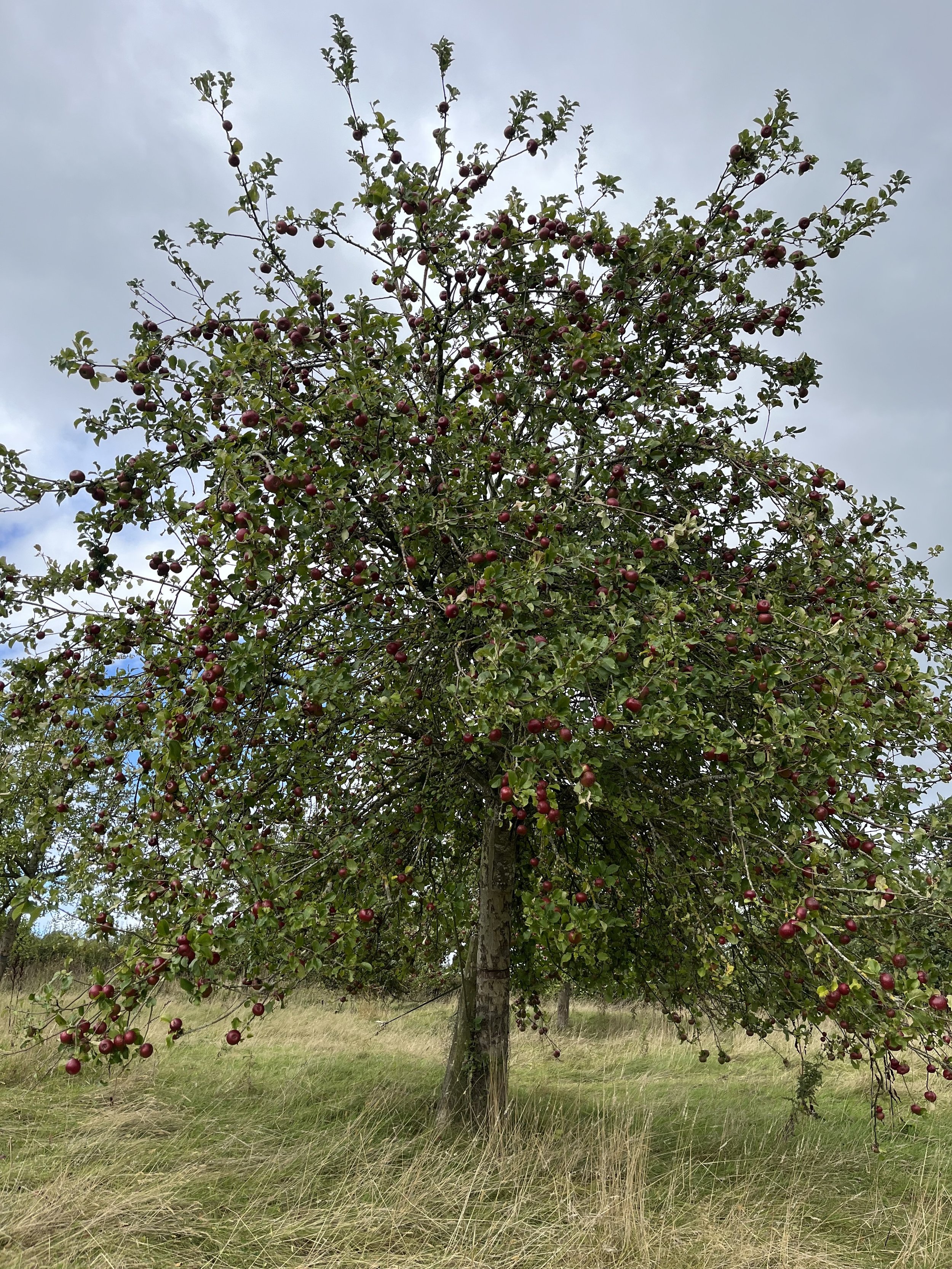
A mosaic of woodland and grassland where the valley meets the mountains
-
Meadows
It's called The Meadowlands for good reason. The first thing that struck us about the site was the unimproved grassland that has escaped modernisation.
Here you can find rare grassland species like Adder's Tongue Fern, abundant orchids, and other beautiful flowers like Ragged Robin and Devil's-bit Scabious.
This ancient habitat supports endangered insects like the Long-horned Bee and the Dingy Skipper butterfly.
-
Woodland
We have over 25 acres of woodland on site, almost half of which are ancient. This means they've been here since at least 1600, and perhaps as far back as the last ice age.
The rich understory is filled with spring delights like Early Purple Orchids, Bluebells, Herb Paris, and Toothwort. Above there is a canopy of Oak, Small-leaved Lime and Wild Service trees, abutting a small stream.
-
Ponds
We have four ponds already, alive with frogs, Great Crested Newts, and damselflies.
On these valley slopes, drains and ditches have been designed to quickly move water off the land and make it suitable for farming. But water is life and we want to hold water on the land again to benefit wildlife.
-
Wood Pasture
We don't have wood pasture yet, but we will soon. We're lightly grazing our least diverse fields in the expectation that they will form scrubby, tussocky grassland beloved by birds and invertebrates.
British wildlife is characterised by species associated with early successional habitats, which benefit from this scrubby habitat that has been cleared from much of the country.
We already have rare ground-nesting birds like Grasshopper Warbler, Tree Pipit, and Whitethroat taking advantage of our scrubbier areas, and this should only increase.
-
Hedgerows
Well-managed hedgerows are lifelines to our wildlife, providing habitat and connectivity across the countryside. They're not natural, but they replicate the dense scrub that would once have been more common.
However, cutting too often and at the wrong time of year means they become gappy and don't produce the flowers and fruits that wildlife needs.
We'll be cutting our hedges on a 3-5 year rotation so they grow big and bushy and support more life.
-

Orchard
Traditional orchards are incrediby biodiverse. Fruit trees reach old age relatively quickly, which means there is lots of deadwood for invertebrates and birds.
Redwing and Fieldfare flock here in the winter and badgers visit at night.




